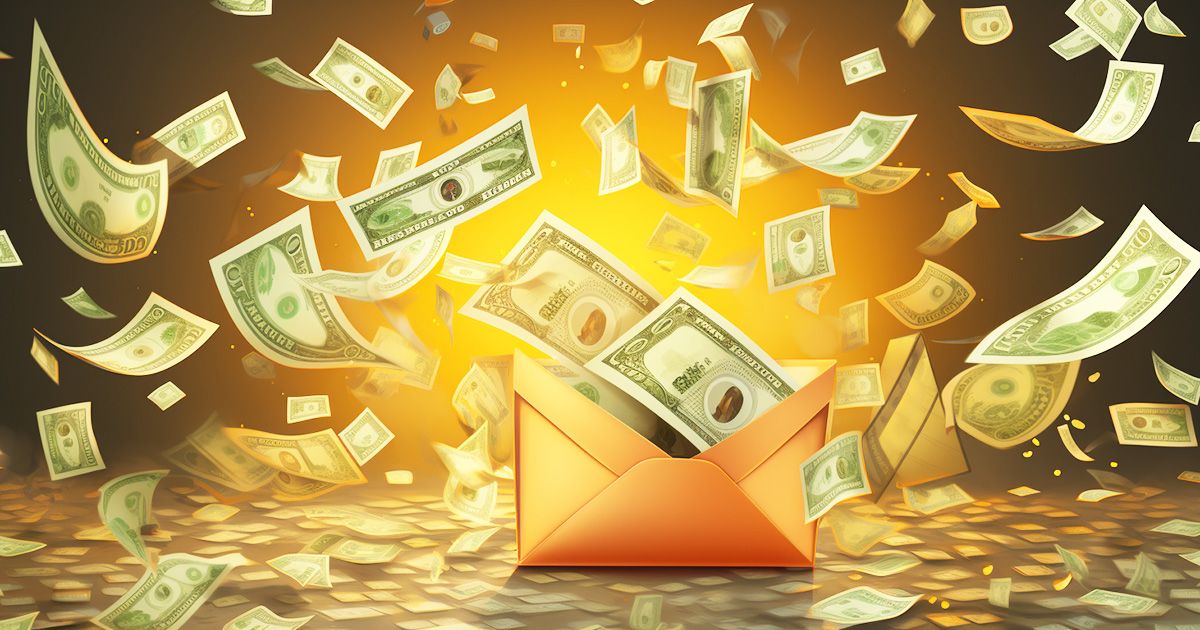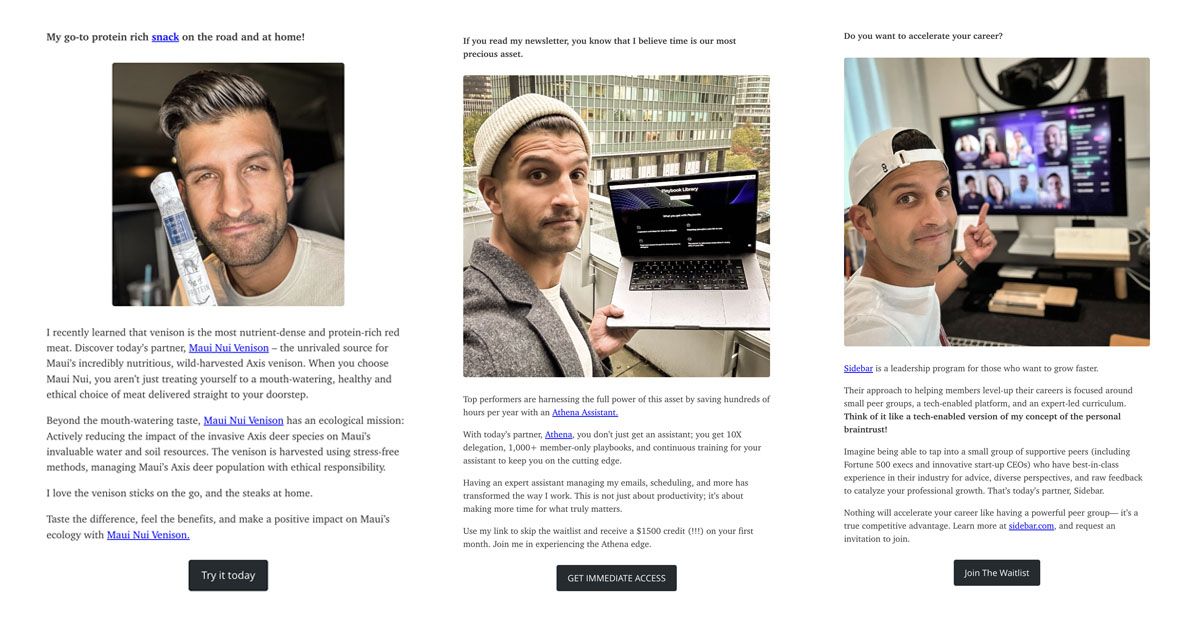Selling Newsletter Sponsorships or Ads Can Generate Loads of Cash for Content Creators
Explore the booming creator economy with a focus on newsletter sponsorships and ads, including compensation models, impact of Apple Mail Privacy Protection, and earning potential in 2023.

Advertising and sponsorships are the fuel that has set the so-called creator economy ablaze.
In 2023, American brands are expected to invest more than $6 billion into influencer marketing, according to Statista. That investment will grow to about $7.1 billion in 2024.
To be certain, advertisers have aimed much of their influencer marketing investment at TikTok, YouTube, and other visual or audio media, but newsletter sponsorships and ads offer a similar level of trust, contextual relevance, and connection while providing a better level of accountability and measurability.
Newsletters Offer Significant Value
With very few exceptions, advertisers expect some form of return on advertising spend (ROAS). This ROAS might be a sale as in the case of an ecommerce business or direct-to-consumer brand. Or the ROAS might be a lead. Regardless, you can expect the brand placing an advertisement to have some idea of how it will measure performance and some definition of success.
What's more, advertisers adjust their promotional spend frequently, shifting placements in accordance with goals and performance.
Given this setting, brands typically consider newsletter advertising and sponsorship for two reasons.
First, they are seeking an endorsement-style promotion, similar to a host-read ad on a podcast, wherein the newsletter creator touts the brand's product or service, personally encouraging subscribers to start a trial or make a purchase.
Second, they are looking for signal. This second group of advertisers are experts at performance advertising. They had mastered the algorithms at Google Ads or on Facebook and Instagram to squeeze out every drip of optimized success. But there is a problem. They are losing signal. The privacy backlash against preference-based advertising is killing cookies, and these brands can no longer target prospects on social media or apps to the same degree. For these brands, newsletters are the next frontier in digital advertising.
What is a Newsletter Sponsorship?
Given that there are two categories of newsletter advertisers —endorsement-seekers and digital performance marketers— there are also two general categories of newsletter sponsorships.
Newsletter Sponsorships
The first of these newsletter sponsorships is a collaboration between the brand and the newsletter creator (author). In these examples, the author often writes or rewrites the ad copy in his own voice.
Consider three sponsorships for newsletter creator Sahil Bloom.

On November 10, 2023, Bloom's newsletter included a sponsorship from venison brand Maui Nui. The spot featured a photograph of Bloom holding the product and had phrases like "I recently learned that venison is the most nutrient-dense and protein-rich red meat" and "I love the venison sticks on the go, and the steaks at home."
A sponsorship from personal assistant service Athena on November 8, 2023, included an image of Bloom with his laptop. On the screen is the sponsor's website. Once again, Bloom is providing a "mini-endorsement" to the sponsor. Finally, Sidebar, a business networking brand, received a similar treatment on November 3, 2023. Its sponsorship showed Bloom sitting at his desktop computer, visiting the Sidebar app.
I don't want to mislead. Not every sponsorship in Bloom's newsletter has a picture of him. Still, about 50 percent did in November 2023, and these personal touches are indicative of the one-to-one relationship typical in these sorts of newsletter sponsorships.
Newsletter Ads
For the sake of clarity, let's call one-to-one endorsements like Bloom's sponsorships. And let's call the digital performance placements ads.
So newsletter ads are going to feature copy the advertiser writes. They are not endorsements, but rather an opportunity for performance marketers to target either a context or a specific newsletter subscriber. These newsletter placements are very similar to how performance marketers use Google or Meta Ads.
If you were a subscriber to the You, Money, Happiness newsletter when this article was written, you should be familiar with newsletter ads. These are similar to web display ads. Some advertisers are interested in the context of the newsletter —personal finance and small business entrepreneurship. Other advertisers want to reach specific subscribers in a privacy-safe way.
Companies like ConvertKit, LiveIntent, and Paved have been at the forefront of newsletter ads, including preference-based newsletter ads. These ads have nearly 100-percent fill rates, meaning a newsletter creator gets paid every time a newsletter goes out.
This option is best for newsletter creators just starting out and will become the dominant form of newsletter advertising in the coming years.
Newsletter Sponsorship Compensation
Brands pay for newsletter sponsorships in various ways, including a flat rate, revenue per open, revenue per click, or revenue per action.
| Compensation Model | Description | What Brands Call it |
|---|---|---|
| Flat Rate | A set price for the sponsorship/ ad agreed to in advance. This rate is paid regardless of performance. | Flat Rate or CPM |
| Revenue per open (RPO) | A performance price typically set based on 1,000 opens. | CPM |
| Revenue per click (RPC) | A set payment per click generated. | CPC or PPC |
| Revenue per action (RPA) | A set payment for each action —sale or lead for example— generated. | CPA or Affiliate |
These various compensation models are standard to many forms of advertising. Essentially, they determine which party —the advertiser or the newsletter creator, in this case— carries the risk.
When a brand pays a flat rate for a sponsorship or ad, it assumes all of the risk. If the sponsorship or ad does not produce sales or leads, the advertiser is out, not the newsletter creator.
At the other end of the spectrum, an RPA or affiliate payments place all the risk on the newsletter creator. The brand could pay nothing if a sponsorship or ad does not perform.
Given this risk spectrum, it should not be surprising to learn that getting an RPA or affiliate sponsorship is very easy, but flat-rate payments tend only to happen for established newsletter creators.
In-kind Sponsorships & Trades
In addition to the various forms of direct compensation a brand will pay for a newsletter sponsorship or ad, some newsletter creators will accept in-kind sponsorships or trades.
For example, imagine that you run a newsletter all about fiction writing tips. You might work with Freewrite, a digital typewriter, of sorts, meant to limit distractions. You could give Freewrite ten newsletter sponsorship placements. In exchange, Freewrite might give you one of its smart typewriters.
Meanwhile, a trade could be the exchange of one sponsorship for another. You place a sponsorship in someone else's newsletter, and they get one in yours.
Apple Mail Privacy Protection
Originally introduced on September 20, 2021, Apple Mail Privacy Protection (MPP) can crush your newsletter sponsorship revenue.
From the perspective of privacy experts, MPP is a good idea since it makes it much more challenging to track email subscribers with traditional digital marketing tools. But from the newsletter creator's perspective, it breaks the bond between creator and subscriber.
When you monetize your newsletter, you offer the subscriber an exchange of value. The subscriber gets the terrific content you write, and you get the means to generate revenue from that content, i.e., sponsorships and advertising. MPP breaks this value exchange, slashing what you earn.
Here is how MPP works.
- MPP conceals email newsletter opens. Images and pixels that had previously let email service providers know when a message has been open are triggered for nearly all messages, inflating open rates.
- MPP masks IP addresses. Apple MPP prevents senders from determining the recipient's IP address, which can be used to infer location information or for tracking across different websites and services.
- MPP opens resources. When you open an email, MPP downloads remote content in the background through Apple's proxy servers, rather than directly from your device.
In September 2023, Apple took things further, slashing UTM parameters from email messages. Making it even more difficult to know if a website visit is real.
Collectively, this means that MPP and UTM removal have made it far more challenging to use the RPO, RPC, and RPA compensation models. Open and click counts will be inflated. What's more, RPA programs may not be able to associate a given newsletter sponsorship or ad with the final action.
How Much Money Will You Earn
Now that you know something about newsletter sponsorships and ads, let's talk about the earning potential. Numerous factors can impact what an individual newsletter creator can earn, but what follows are some estimated ranges for 2023.
| Revenue Model | Earning Potential |
|---|---|
| Flat Rate | $15 to $45 per 1,000 subscribers. Varies with industry, creator popularity, fill rate, and performance. |
| RPO or CPM | $1 to $20 per 1,000 opens. Varies with industry, creator popularity, fill rate, and performance. |
| RPC or CPC | 80 cents to $5 per click. Depends on the value of the brands product and their customer acquisition targets. |
| RPA or CPA | $5 and up. This depends on the value of the transaction. An RPA for a $15 item will be far less than an RPA for a $1,500 item. |
The rates you can charge for a newsletter can and will change over time. For example, there are loads of cryptocurrency companies buying flat-rate newsletter sponsorships in 2021 and 2022, but most of these brands had spotted buying in 2023.
What does help with revenue is the relationship a newsletter creator has with his audience. The more engagement, the more earning potential.